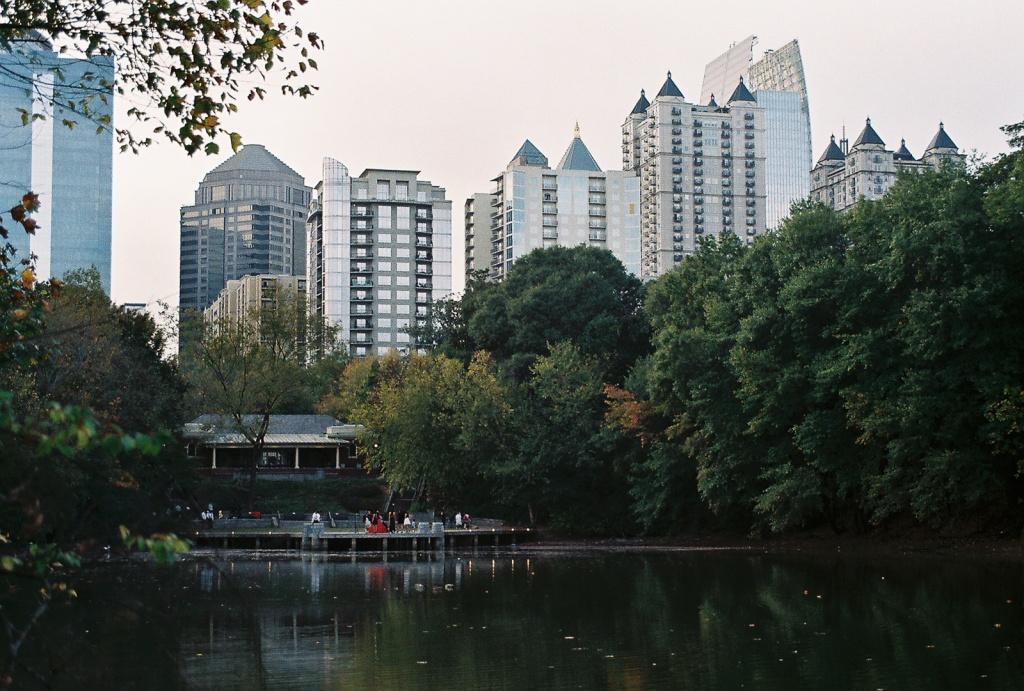In 1976, Canon launched the AE-1, an automatic camera with shutter speed priority automatic exposure. It was a very capable, judiciously priced camera which sold in excess of 1 million units. It was driven by a microprocessor, and Canon took advantage of the flexibility of its architecture to derive rapidly more models – the AT-1 (semi auto) in 1977, the AV-1 (aperture priority automatic in 1978), the AE-1 Program in 1981, and the AL-1 (a camera with an electronic focus assist system) in 1982. The A-1, launched in 1978, was the top of the “A” line, and was the first system camera to combine 3 types of exposure automation modes – shutter priority, aperture priority and program, in the same body.
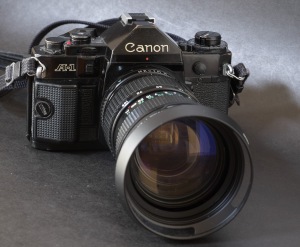
Until the launch of the A-1 (and of Minolta’s XD-7 at about the same time), an auto-exposure camera only operated in one mode. Minolta, Nikon and Pentax were in the “Aperture Priority” camp (the photographer selects the aperture, the camera sets the shutter speed automatically), while Canon and Konica were defending “shutter priority” (the photographer selects the shutter speed, and the camera sets the aperture automatically). Each camera manufacturer was presenting the solution it had picked as the best, but the truth is that a photographer could have benefited from Aperture Priority one day (if he was shooting landscapes, for instance) and from Shutter Priority another day (when he was shooting sports events, for instance). With the A-1, Canon not only offered Aperture and Shutter Priority modes (which required the user to pick the most appropriate mode and set the aperture or the speed accordingly), but also a program mode, where the camera automatically selected the Aperture and Shutter speed combination, without any intervention from the photographer.

Today, most of the “A” series cameras of Canon are still abundant and cheap – they were manufactured in huge quantities, and they have withstood the test of time much better than most of their less reliable competitors. With the exception of the A-1 which has a stronger personality, the cameras of the “A” generation are rather unremarkable. They’re not big (but not as small as the Olympus OM cameras), their build quality is good, but not exceptional (compared to a Nikon FM or FE of the same vintage, they feel plasticky), the view finder is large and luminous enough – but … not exceptional (you guessed it right). They need a battery to work, but the battery is an easy to find a 6v alcaline or silver oxide battery. They’re easy to use, and in the hands of a moderately competent photographer, will produce good pictures.
The A-1 is a bit different. It was designed as Canon’s top of the line, and it was intimidating when it was launched (there had never been so many buttons and switches and cursors on a camera). But the controls were very logically implemented and the learning curve must have been short. Canon’s implementation of the controls for the three automatic exposure modes was very clever and was a decisive step towards the modern ergonomics (control wheel and LCD) of the Canon T90 and its EOS successors.
In order to operate in auto-exposure mode, first set the lens’ aperture ring to “A”. Then move the mode switch to “Av” (Aperture priority) and select the aperture with the control wheel, or set the mode switch to “Tv” (Shutter priority), and use the control wheel to select the shutter speed (from 30 sec to 1/1000 sec.). The Program Mode is accessible from the “Tv” position – there is no dedicated position of the mode switch for the Program Mode.
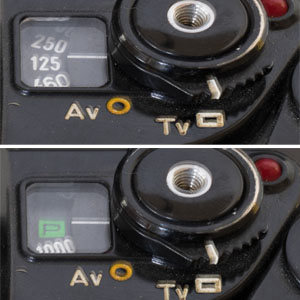
Canon’s implementation of the multi-mode auto exposure is more user friendly that Nikon’s. When they launched the FA (5 years after the A-1), Nikon kept the conventional shutter speed knob next to the mode selector. In the picture above, the camera is set in Aperture Priority Mode (the photographer selects the aperture and the camera picks the shutter speed, that could be anything from a few seconds to 1/4000 second), but the shutter speed knob still shows 1/250, which can be misleading.
Today, the A-1 is still a very good tool. It offers all sorts of controls (exposure memorization, depth of field preview, multiple exposure of the same frame) and its only limitation is its shutter. Film is now significantly faster than in 1978 (200 or 400 ISO is the new normal), and a shutter with a fastest speed of 1/1000 can be a limitation.
The “T” models that followed were ugly plastic bricks controlled by push buttons – with the exception of the T90 which is a beautiful precursor of the EOS models, but suffers from reliability issues (sticky shutter).
In my opinion, the A-1 is the last great camera using FD lenses that can still be used today. It is not a beautiful piece of classical photographic machinery like a Canon F-1, but it’s a solid and very capable tool, that a photographer trained on modern “control wheel” SLRs will learn how to use easily.
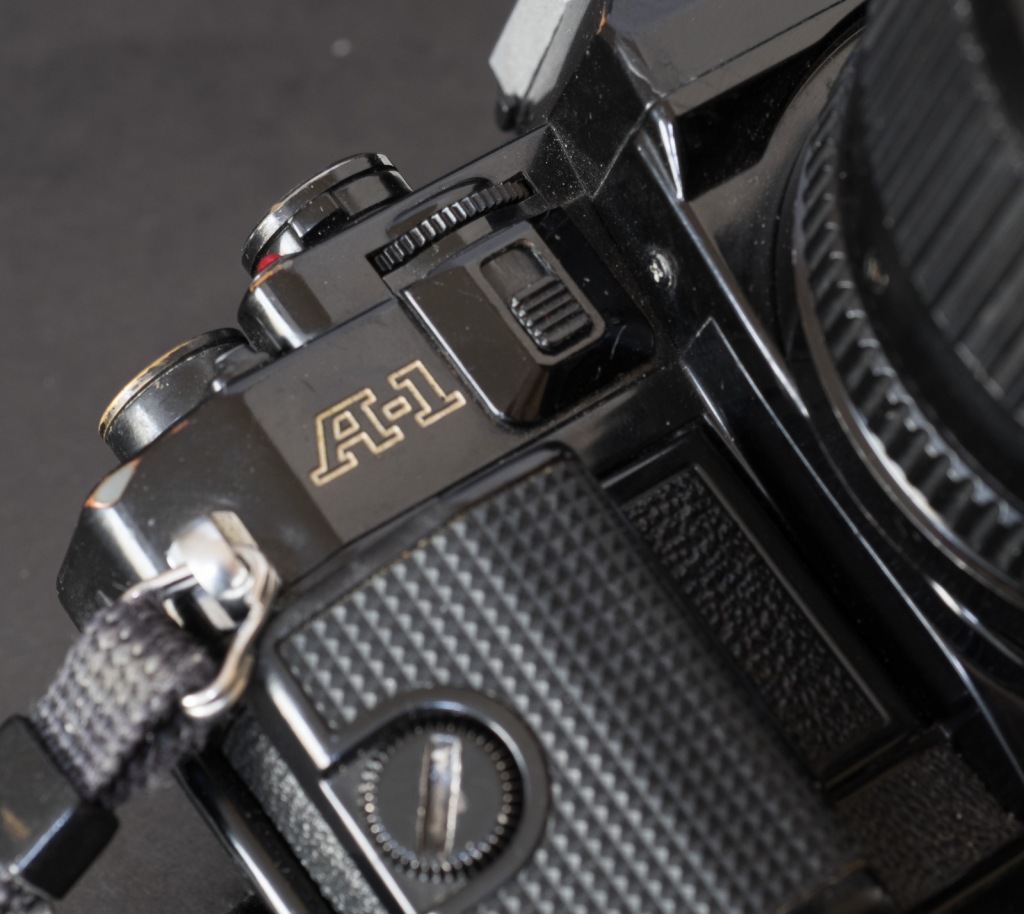
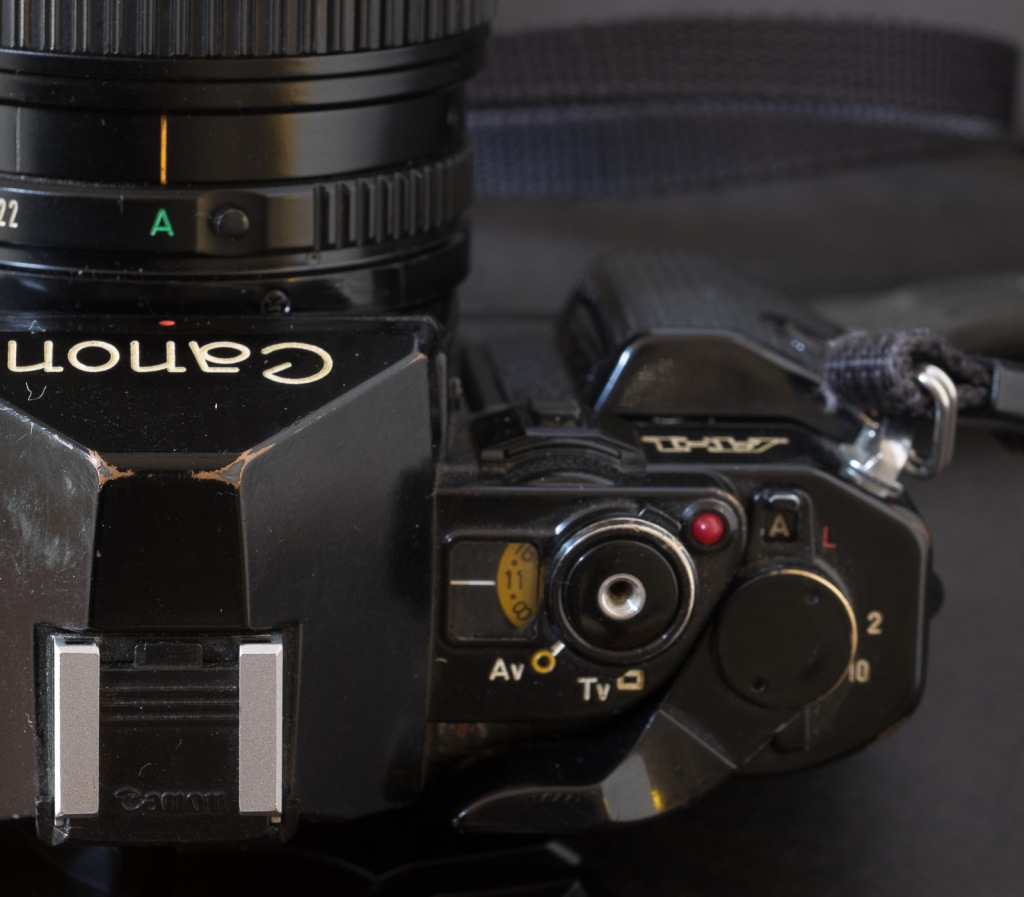
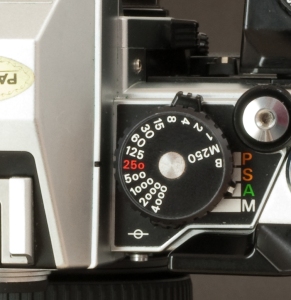
What were the competitors doing when Canon was launching the AE-1 and the A-1?
The Nikon cameras of 1978 were conventional semi auto and aperture-priority auto exposure cameras.
- Nikon was selling three models, the F2, FM and FE, with AI lenses.
- The AI bayonet mount could not have supported Shutter Priority and Program modes. A new variant of the Nikon F mount, the AI-S, was launched in parallel with the FG and FA, the multi-auto cameras of 1983.
In 1978, Pentax was selling the ME/MX cameras with the K mount (not capable of supporting Shutter Priority and Program modes).
- The bayonet mount was revised in 1983 to become the KA for the launch of the Pentax Super A.
- The Super-A was Pentax’s only manual focus reflex camera supporting the same 3 auto-exposure modes as the Canon A-1.
In 1978 Minolta was selling the XD-7 and its derivatives (dual auto, but no Program mode) in addition to a line of Aperture Priority cameras.
- Minolta’s MD lenses (launched in 1977) benefited from an updated version of the SR mount and could support cameras with Shutter Priority auto-exposure in addition to the Aperture Priority mode that the MC lenses already supported
- The first Minolta SLR to offer also a Program Mode was the X-700 in 1981.
- Interestingly none of those newer generation “X” models offered the 3 auto-exposure modes of the A-1: the shutter priority mode was missing.
With its 3 auto-exposure modes, the Canon A-1 was definitely unique among the system cameras of the Big 4.
